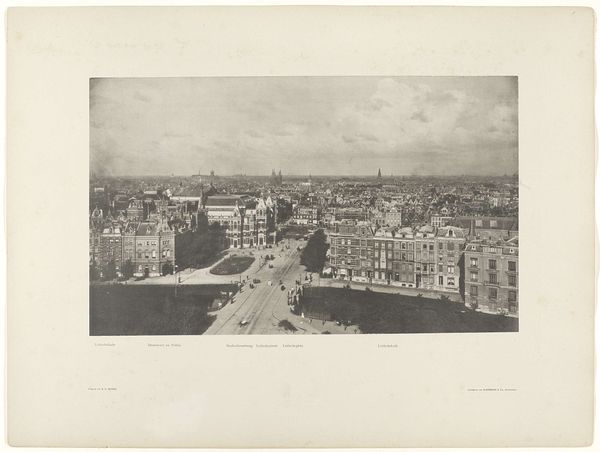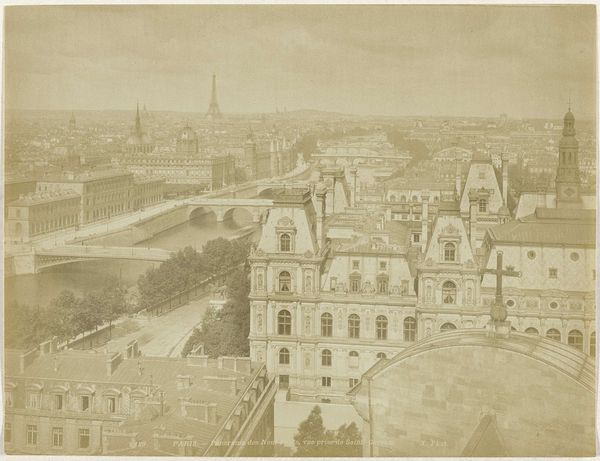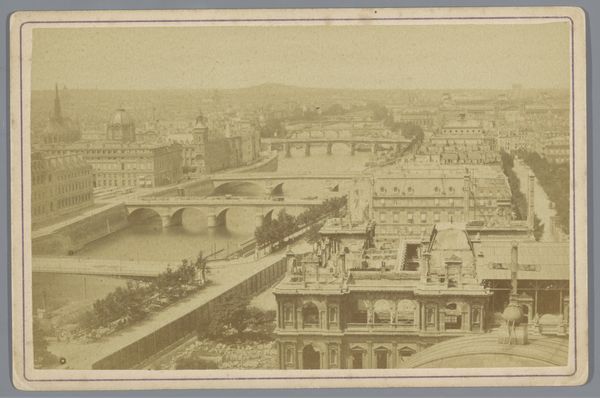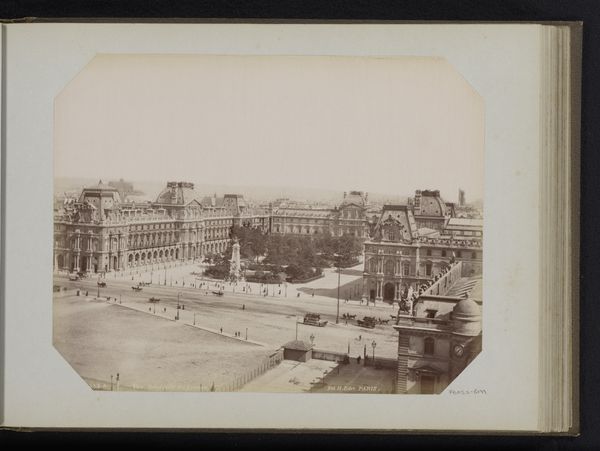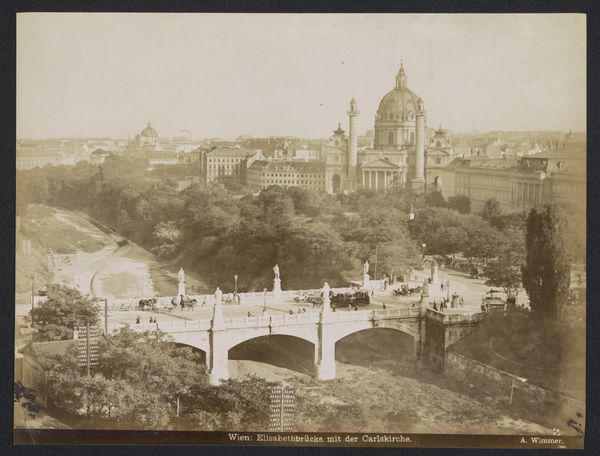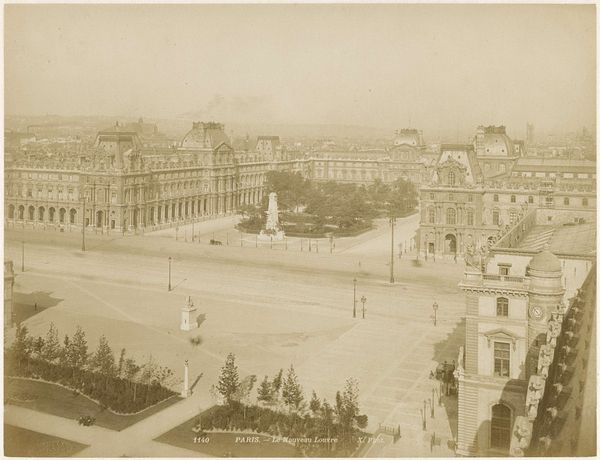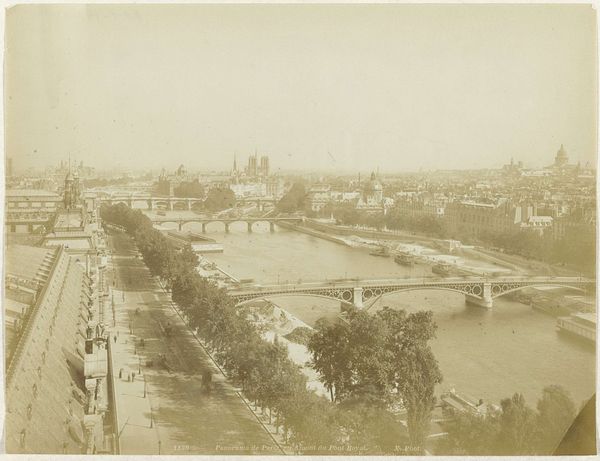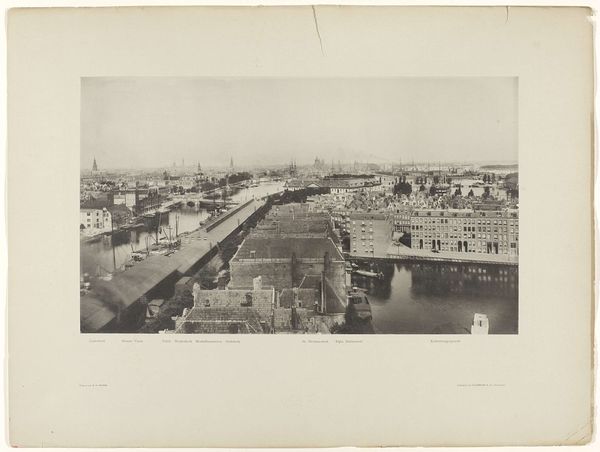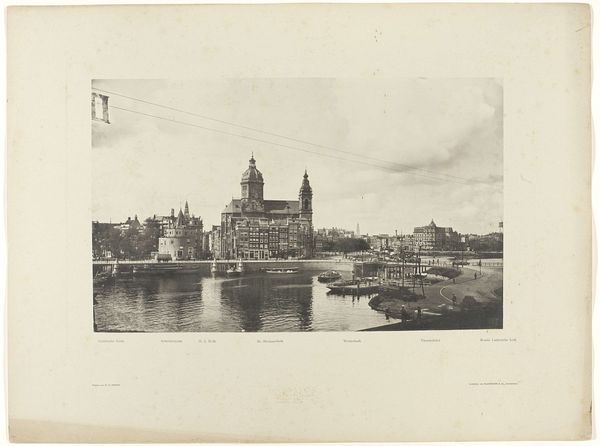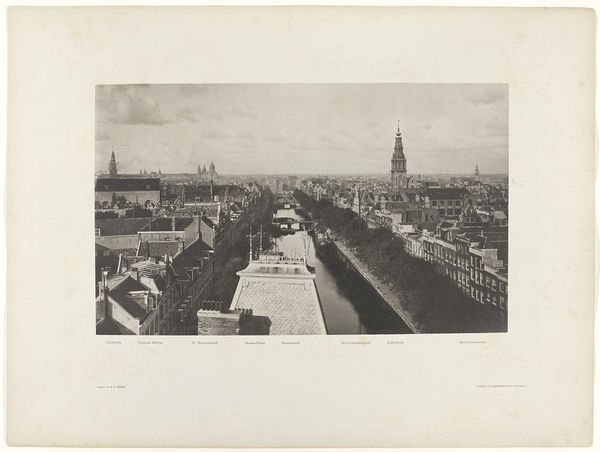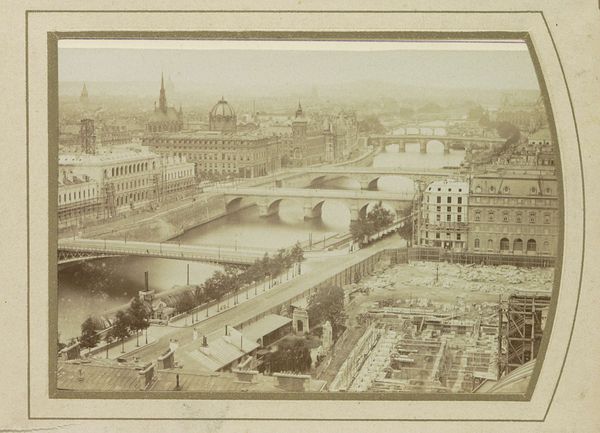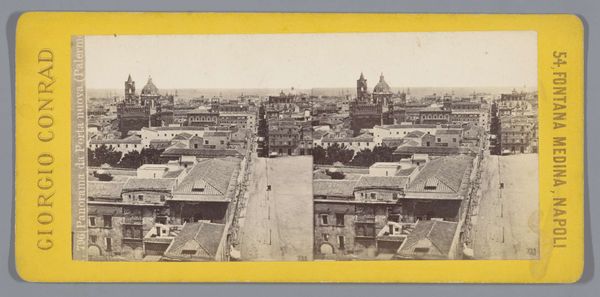
print, photography, gelatin-silver-print
# print
#
landscape
#
river
#
photography
#
historical photography
#
gelatin-silver-print
#
19th century
#
cityscape
Dimensions: height 182 mm, width 251 mm
Copyright: Rijks Museum: Open Domain
Curator: Looking at this gelatin silver print, I’m struck by its melancholic mood. What are your first thoughts? Editor: I agree. It’s wistful. The tones are so muted, almost sepia-toned despite being a silver print. It makes you wonder about time and memory. Curator: It is titled "View of a Bridge over the Arno in Pisa, Italy," and it's believed to be made between 1850 and 1879. The photographer is Enrico van Lint, and the work is preserved at the Rijksmuseum. This was a transformative period, not only for Italy during the Risorgimento, but also in the early development of photography, so there are some interesting historical convergences. Editor: Photography was starting to catch on, so I am intrigued about the artist's viewpoint. The composition seems like it's capturing a real feeling. Is the goal for historical document or does it communicate something more about Italian society at the time? Curator: Both, perhaps? There is also an undeniable perspective embedded in landscape imagery. The position from which the artist frames the city is a demonstration of power, or at least control over what the image portrays and the gaze it encourages in the viewer. The grand architecture of Pisa, combined with the river that runs throughout, could symbolize stability during the emergence of Italian national identity. Editor: Well, for me the way that light catches the Arno’s surface, the quiet geometry of the bridge and the buildings, speaks of something more elusive, less concerned with the power struggles. Maybe Van Lint just found beauty there. Curator: Indeed, and we have the benefit of hindsight and different lenses through which to look back on these images. So, is there anything else you observe in this scene that speaks to you? Editor: Yes, I'd say it prompts us to meditate on our own relationship to history. What traces of today might a future observer glean from a photograph of this same view? Curator: Exactly. The role of the artist isn't necessarily just documenting history, but constructing future imaginaries through these records. Editor: Food for thought! Now, I need an espresso to ponder this properly!
Comments
No comments
Be the first to comment and join the conversation on the ultimate creative platform.
